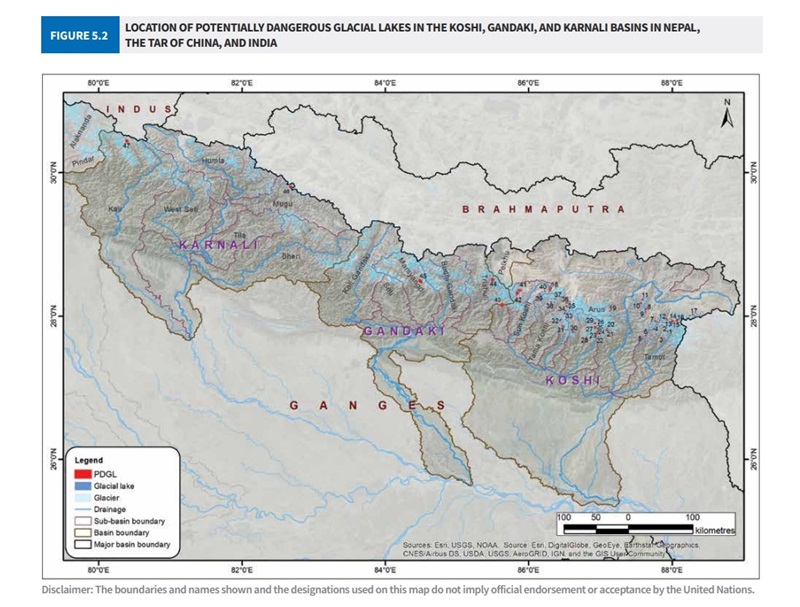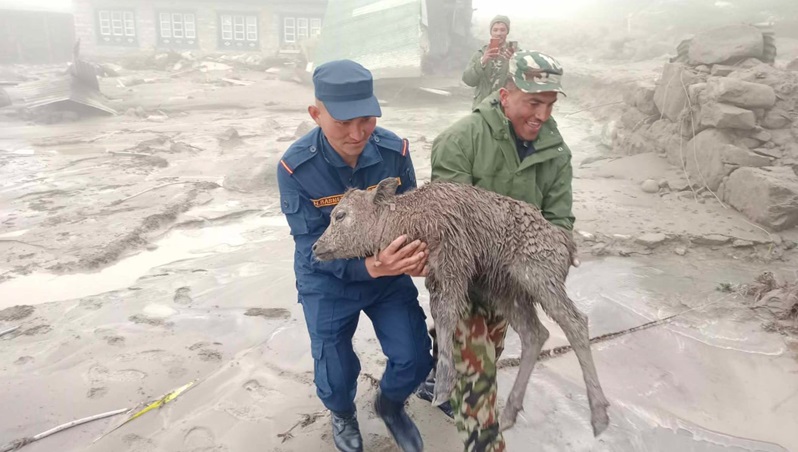Beijing has not kept promises to provide data on its lakes, hampering efforts to prevent flood disasters, a senior Nepali official says
The Chinese government’s failure to provide information about the state of its Himalayan glacial lakes is endangering mountain-dwellers in neighbouring flood-prone Nepal, according to a senior government official.
Two lakes in Nepal burst last Friday, destroying dozens of homes in a village known for its Everest sherpas, raising fears that global warming is likely to cause more such disasters as glaciers melt in high mountain ranges.
After last week’s flood, Jagadishwor Karmacharya, the head of Nepal’s hydrology and meteorology department, told Climate Home the Chinese government has not shared “essential” information about its glacial lakes and the risk of floods that threaten Nepal.
In 2016, for example, Gongbatongshacuo Lake in Tibet burst, causing a flood along the Bhote Koshi River in Nepal’s northern district of Sindhupalchowk. It swept away 20 houses, a boarding school and parts of a customs office, damaging dozens more buildings and a hydropower plant and destroying large stretches of road, including a highway linking Nepal and China.
Sign up to get our weekly newsletter straight to your inbox, plus breaking news, investigations and extra bulletins from key events
Karmacharya said China, Nepal and India must collaborate to prevent such disasters, adding that Nepal has been asking China for many years to supply data about its glacial lakes but China has not met promises to do so made in bilateral meetings and other fora.
“If a lake in China bursts, the impact on Nepal could be unimaginable,” he said. “This information is essential for us to prepare and reduce the impact of floods.”
The Chinese embassy in Kathmandu did not respond to an emailed request for comment.
Melting ice
A glacial lake is made up of water from melted glacier ice. Climate change has sped up the melting of glaciers which forms lakes and can cause avalanches, making it more likely that the water in these lakes bursts through the ice holding it back, causing what is known as a Glacial Lake Outburst Flood (GLOF).
That’s what happened last week in a relatively small pair of lakes called Para Chhumo in Nepal. According to University of Alaska Fairbanks researcher Amrit Thapa, warming air melted snow and glacier ice, causing an upper lake to form in the 2010s, adding to the lower lake which has existed since the 1980s.
Both lakes burst their banks on Friday, with water rushing 10 km down the mountain to hit the village of Thame, famous as the home of Sherpa mountaineers like Tenzing Norgay, where it destroyed 23 homes and damaged 40 more, according to the Khumbu Pasang Lhamu Rural Municipality.

The village of Toktok, about 50 km downstream from Thame, where three homes were swept away and two were damaged by the flood from the Dudkoshi River. (Photo by Khumbu Pasang Lhamu Rural Municipality.)
A bridge and tourist trails were also washed away and local business-owners told Climate Home they feared the tourist industry the village relies on will be hit, as there are fewer places for visitors and trekkers to stay.
Basanta Raj Adhikari, an engineering professor at Tribhuvan University and director of its , asked: “If a small glacial lake like this can cause such destruction, what would happen if a larger one bursts?”
A 2020 report from the International Centre for Integrated Mountain Development (ICIMOD) and the UN Development Programme (UNDP) in Nepal identified 47 glacial lakes in the Himalayas as potentially dangerous. One, Tsho Rolpa, is 30 times bigger than Para Chhumo. Of these 47 glacial lakes, one is in India, 21 are in Nepal and 25 are in Tibet, which is governed by China.

Most of the potentially dangerous glacial lakes (red) are in the Koshi river basin which spans Nepal and Tibet (Screenshot/ICIMOD)
Between 1977 and 2020, Nepal experienced 26 GLOFs, 14 of which originated in the country, the inventory noted.
Move the village?
To compensate local people for this month’s damage in Thame, the Nepali government has
Read More

